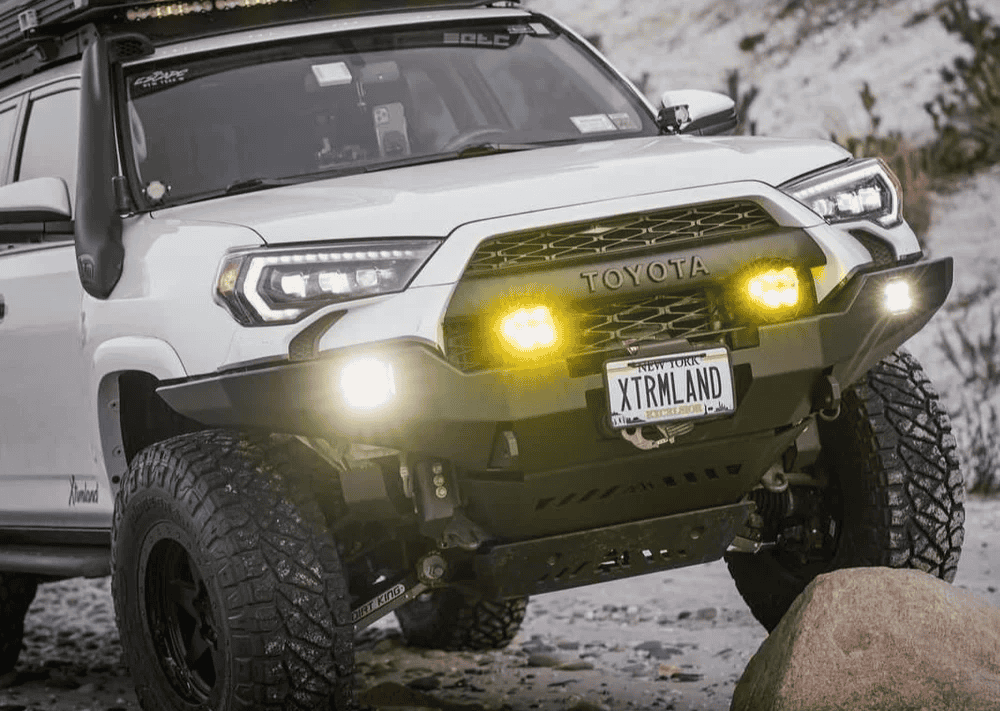Overland Vehicles

An awning is a cantilevered sail. Treat it like a structural component, not an accessory. A dependable awning mount setup starts with a rack or rail system designed to carry dynamic loads. Verify the rack or factory rails are rated for the combined weight of the awning, brackets, and any side walls or rooms you plan to add. Consider dynamic loads during highway crosswinds, trail chatter, and emergency maneuvers, not just the static weight.
Match bracket geometry to the awning body so the load path is straight and secure. Long arms increase leverage on the mounting points, so use multiple brackets spaced widely along the cassette or roll. Avoid bolting only to thin sheet metal. Use factory hard points or a purpose built rack with internal channels that accept proper fasteners and backing plates. Always confirm hardware grade and follow manufacturer torque guidance.
Mount placement matters. Set height for sliding door clearance, rear door swing, and driver sightlines. Position slightly forward if you want better wind shadow for cooking; move rearward if you prioritize shade for the lounge or moto staging area. A small tilt promotes drainage when it rains, reducing water pooling on the fabric and drip lines over doors.
Vehicles flex, and so will a long awning. Spread the load with backing plates or wide channel nuts inside the rack extrusions. Where you must drill, deburr, prime, and seal. Use gaskets or marine grade sealant that cures flexible to resist vibration and temperature cycles. Recheck fastener torque after the first few drives and again after off road use.
Galvanic corrosion can ruin a clean install. When joining stainless hardware to aluminum racks, add isolators or nylon washers, and use anti seize where appropriate. On coastal trips, rinse salt and dust off brackets and rails. This simple habit protects coatings and keeps fasteners serviceable.
Wind management is non negotiable. Use supplied guy lines and legs when the breeze picks up, and stow the awning at the first sign of a squall. Side panels add shade but also add wind load, so treat them as another lever acting on your mount. A rigid, well supported rack and correctly spaced brackets give you more margin when conditions change quickly.
Measure twice with doors open. Sliding doors can kiss lower arms if the mount sits too low, and rear doors can collide with a short awning body placed too far back. If you carry bikes or boards on the same side, mock up everything at once to confirm the opening arc remains clean.
A quiet setup is a safe setup. Use threadlocker where specified, cap unused rack channels with inserts, and route wires inside channels to avoid whistle. Fabric flapping usually points to mis set tension or a twisted arm; reset according to the manual until the canopy sits flat.
Integrating lighting under the canopy extends camp hours and improves safety. Low draw LED strips mounted to the rack extrusion or to the awning body provide even light without glare. Plan a switched circuit tied to your auxiliary battery system, run wiring inside the rack channels where possible, and protect all penetrations with grommets and sealant.
Think about workflow. A cook station usually benefits from a forward mount close to the sliding door, while a moto or bike pit might need rear shade. If you use shower kits or privacy walls, confirm the footprint does not block the fuel door or ladder. Finally, store dry. Let the fabric air out after wet trips to prevent mildew and staining.
Awnings live outside, so small checks pay off. Inspect fabric stitching, hinge pins, and bracket fasteners at the start of each season and after rough tracks. Clean fabric with mild soap and water only. Avoid harsh chemicals that strip waterproofing. Touch up chips on brackets to prevent corrosion creep. Do not leave the canopy deployed in snow or strong wind; stow early and travel with it latched and locked.
A well planned awning mount setup blends structure, sealing, and day to day convenience. When these basics are right, the canopy becomes a dependable part of your camp routine rather than a worry in your mirror.
If you want an engineered mount that matches your rig’s mission, our team builds and installs systems that hold up on trail and stay quiet on the highway. From bracket placement to wire routing for integrated lighting, we handle the details so you can focus on the trip. Explore ideas on our overland rigs page, or step into our custom overland upfit process to plan a full side shade solution as part of a larger build. Curious about our approach and client experience? See why travelers choose us at why choose OZK Customs.
We design around real use: weekend trailheads, long highway links, and stormy nights in camp. That means correct load paths, corrosion control, quiet aerodynamics, and clean power integration tied to your auxiliary system. Bring us your goals, your platform, and how you camp. We will translate that into a mount that feels invisible when driving and indispensable at camp.
Ready to dial in your awning mount and shade workflow? Share a few details about your vehicle, how you travel, and what you want to cover. Our Fayetteville Arkansas shop will spec the brackets, rack interface, sealing plan, and lighting so your setup looks factory and performs far from pavement. As a full service builder, we also craft adventure vans, overland rigs, and towable solutions tailored to your trips.
Bring your rig to OZK Customs in Fayetteville, Arkansas for a pro grade awning mount and seamless integration. Our team engineers brackets, racks, wiring, and sealant strategy so your setup stays quiet, watertight, and trail ready. Share your goals, and we will design the right solution and deliver a clean, durable install.
ADDRESS:
6159 E Huntsville Rd, Fayetteville, AR 72701
PHONE:
(479) 326-9200
EMAIL:
info@ozkvans.com